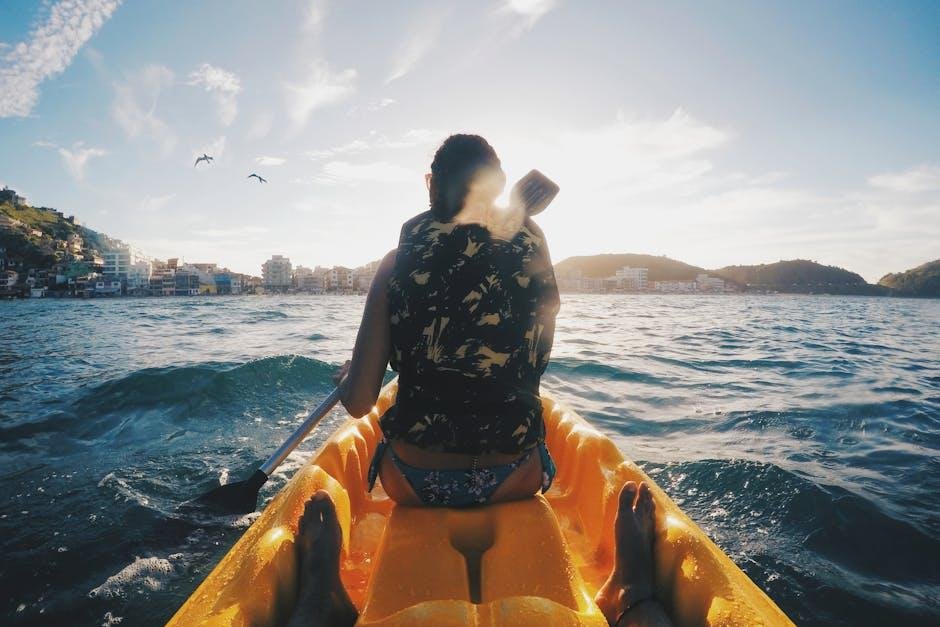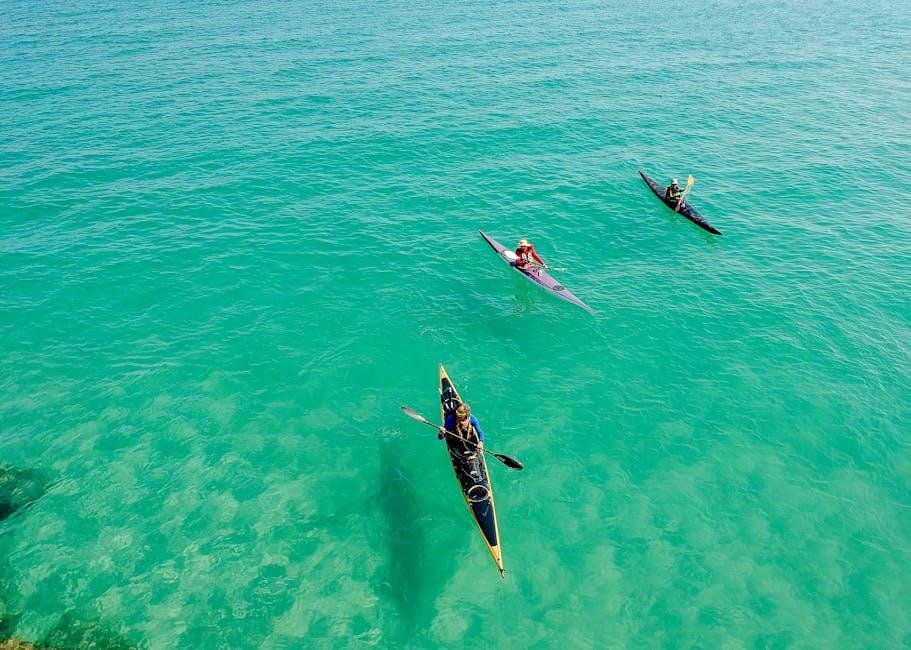Kayaking offers a unique way to connect with nature,gliding across tranquil waters while immersing oneself in the serene beauty of the great outdoors. However, when the wind picks up, it can transform a peaceful paddle into a challenging endeavor. Navigating choppy waters and unpredictable gusts demands not only skill but adaptability. As the breeze carries whispers of adventure,it’s crucial to be prepared for the elements that nature may throw your way. In this article, we explore essential tips for kayaking in windy conditions, empowering you to stay safe while embracing the thrill of the water.Whether your a seasoned paddler or a novice adventurer, understanding how to respond to the wind will enhance your kayaking experience. So, strap on your life jacket, steady your paddle, and let’s set out on a journey that balances excitement with safety.
Understanding Wind Dynamics and Their impact on Kayaking
Wind is a powerful force that can considerably alter kayaking conditions. Understanding how wind interacts with water can help kayakers make informed decisions about when and where to paddle. Surface wind can create waves and turbulence, making navigation more challenging, while updrafts and downdrafts can affect a kayak’s stability. The variations in wind speed and direction can lead to unpredictable situations, notably for those exploring wide-open areas or navigating through narrow channels. Recognizing these elements allows paddlers to better anticipate potential hazards and adapt their techniques accordingly.
One of the best strategies for dealing with windy conditions is to plan your route wisely. Consider factors such as the wind direction, which can be categorized as follows:
- Headwind: paddling against the wind, increases exertion.
- Following wind: provides assistance but may lead to loss of control.
- Crosswind: impacts balance and steering,requiring constant adjustments.
In challenging conditions, adapt your paddling style by using a low profile stroke and leaning into the wind to maintain stability. having the right gear is also vital; a kayak with a rudder or skeg can enhance directional stability, while wearing a life jacket is essential for safety. Following these guidelines can lead to a more enjoyable and safer kayaking experience, even when faced with the whims of the wind.

Essential Safety Gear for Windy Adventures
When venturing out into the watery expanses on a windy day, having the right equipment is crucial for your safety and enjoyment. Personal flotation devices (PFDs), such as life jackets, should be your first consideration; they keep you afloat and enhance visibility on the water. Before heading out, it’s wise to invest in a quality pair of windbreaker jackets designed to protect against gusty conditions while allowing for breathability. Footwear also plays a important role; opt for non-slip, waterproof shoes to maintain grip while navigating slippery surfaces.
Moreover, a well-equipped kayaking toolkit can be a lifesaver. Include the following items in your gear:
- Whistle: A signaling device is essential for emergencies.
- Safety light: A flashlight or headlamp for low visibility situations.
- First aid kit: A compact kit to handle any injuries.
- Dry bags: To protect your essentials from water.
Having these essentials can make a significant difference, ensuring that your adventure remains as fun as it is safe.

Techniques to Navigate and Maintain Control in Gusty Conditions
When faced with gusty winds while kayaking, maintaining control is essential for both safety and enjoyment. One effective technique is to utilize windward paddling, where you position your kayak slightly into the wind while paddling. This helps counteract the force of the wind pushing you sideways.Additionally, consider using a low stroke technique, which involves keeping your paddle closer to the water surface. This not only stabilizes your kayak but also allows for more efficient movement through choppy waves. Remember to regularly check your surroundings for changes in wind patterns and potential hazards.
Adopting the right body position is equally crucial when navigating gusty conditions. Keep your center of gravity low by sitting upright and drawing your knees toward your chest. This enhances stability and helps you maintain balance amid shifting wind forces. engaging your core muscles will provide additional support and responsiveness.In scenarios where the wind intensifies, it may be wise to take a brief respite by temporarily pulling your kayak closer to shore and assessing your approach. Always remain aware of the wind direction and consider using a drift anchor to help stabilize your position when taking breaks.

Planning Your Route: Choosing Safe Waterways and Timing
When planning your kayaking journey during windy conditions, the choice of waterways is crucial.Not all bodies of water are created equal, especially when it comes to dealing with strong gusts.Look for sheltered routes that feature natural windbreaks like trees or hills. Larger lakes can catch the wind and create rough conditions, while smaller rivers and channels may provide a smoother experience. Additionally, consider waterway features that can influence the current and the wind. Here are a few suggestions:
- Rivers with gentle bends can help reduce wind impact.
- Estuaries where freshwater meets saltwater often have calmer waters.
- Inland lakes that are surrounded by hills or mountains can create natural barriers against the wind.
Timing your trip is equally crucial. Launching during the early morning or late afternoon can frequently enough result in more favorable conditions, as winds tend to be lighter at these times. It’s essential to stay updated with local weather forecasts to understand when wind patterns are likely to change. Additionally, consider the tide schedules if you’re navigating coastal areas, as tides can significantly affect water conditions. Use the following guidelines to determine the best timing for your adventure:
| Time of Day | Wind Conditions | Best for Kayaking? |
|---|---|---|
| Early Morning | Light Winds | ✔️ |
| Midday | Often Strong Winds | ❌ |
| Late Afternoon | Decreasing Winds | ✔️ |
The Way Forward
As the sun sets on our exploration of kayaking in windy conditions, it’s crucial to remember that nature, while breathtakingly gorgeous, demands our respect and caution. Embracing the thrill of paddling amidst the swells can be exhilarating, but safety should always take precedence. With the right preparation, skills, and mindset, you can navigate the challenges of gusty winds and enjoy the serenity of the water. Whether you’re an experienced paddler or venturing out for the first time, keep these tips in your mind, and let the winds guide you safely on your journey. so, grab your paddle, don your life jacket, and embark on your next adventure with confidence—after all, every wave is a story waiting to unfold. Safe travels!
